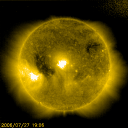This was the message received by the Australian Naval Board, from the British Admiralty on the 5th of August 1914, at 1100 (11 AM) Australian time ( ahoy.tk-jk.net/MaraudersWW1/Postscript.html)
German ship in Melbourne when WW1 dawns
On the day war broke out, there was one German ship in Melbourne, it was the 6,560 ton steamer Pfalz, which had taken on board the Consulate staff from Melbourne, and was proceeding down Port Phillip Bay to pass through the heads, into the freedom of the open sea.
Captain Robinson was the Australian pilot navigating this vessel towards the Rip.
Port Phillip Bay, is a large body of water, but it narrows at the entrance, and is overlooked by protecting Forts on each side of the entrance, these two areas are collectively known as the Heads.
The morning war was declared by Britain on Germany, the Forts situated each side of the Bay, and guarding the Rip, were warned that Australia was now also at war with Germany.
The first shot to be fired by Australia in WW1, came from a 6 inch gun emplacement at Queenscliff, it was aimed across the bows of Pfalz as she was about to enter the Rip. Captain Robinson now observed the signal flying at the Fort, was against the vessel he was piloting, notwithstanding an argument with the German Merchant Captain, Robinson prevailed, he turned Pfalz about, and sailed her back to Melbourne and captivity.
A subsequent inspection uncovered 4 inch guns stowed in her hold, plus evidence came to light that this ship had been built to enable these guns to be mounted to turn her into an Armed Merchant Ship. It had been a close run thing!
The Germans now became Prisoner's of War, and Captain Robinson barely escaped the title of " Australia's first POW of WW1."
http://users.netconnect.com.au/~ianmac/coastal.html
The first shot of World War 1 by any allied army is supposed to have been fired from Point Nepean fort at Port Phillip Heads. The date was 5 August 1914, and the war was just one day old. The target was the German steamer Pfalz which was attempting to leave the port.
When she left Melbourne, news that Britain had declared war had not yet reached Australia. But that news had come through by the time Pfalz had reached the Heads. A shot fired ahead of the ship prompted wrestling over the engine-room telegraph control between the ship's Master and Melbourne Pilot Captain M. Robinson of Williamstown, followed by a quick reversal of course. The ship returned to anchor off Williamstown. More than five hours passed after the incident before the crew realised why the vessel had been fired upon and detained.
Pfalz was fitted out as a troop transport, and renamed H.M.T. Boorara.
The first shot of the Second World War is believed to have been fired from the same spot--Point Nepean--at a passing German ship--ss Stassfurt--which refused to stop and escaped.
Lesser-Known Facts of WWII
members.iinet.net.au/~gduncan/facts.html
FIRST ALLIED SHOT
The very first Allied shot of the war in the Far East was actually fired over the bows of the Australian coaster Woniora (Captain F. N. Smale) from a 6-inch gun emplacement at Point Nepean, guarding the entrance to Melbourne's Port Phillip Bay. The 823 ton coaster had entered the bay at 9.15 pm on September 3, 1939 after a trip from Tasmania. Ordered to heave-to for inspection, the coaster gave her identity but continued on without stopping. A 100 lb shell, fired across her bow, soon changed her captain's mind.
By a remarkable coincidence, this was the actual, same gun that had fired the first shot of World War I when, hours after war was declared, it fired on the German Norddeutscher Llyod 6,500 ton steamer Pfalz while it attempted to leave Australian waters on August 5, 1914. The Pfalz was then returned to Williamstown where the crew was detained. The captured vessel served out the rest of World War I as the Australian troopship HMT Boorara.
www.walkabout.com.au/locations/VICPortsea.shtml
The walks also explore the remains of the defensive network (fort, barracks, gun placements and subterranean passages) that was first established at Point Nepean in 1882 to guard the entrance to Port Phillip Bay during a period when there were pervasive fears of a Russian invasion. Local limestone proved ideal for the construction of underground passages and, by the end of the 19th century, the fort was allegedly the most heavily armoured outpost in the Southern Hemisphere.
The fort's two cannons allegedly fired the first shot on Britain's side in both world wars.
On August 5, 1914, when Australia received word of Britain's declaration of hostilities, a German freighter happened to be in Port Phillip Bay. A shot was fired across the bow and the crew were then detained as POWs.
A volley from these same cannons was again fired at the declaration of war in 1939. However, the target proved to be a Tasmanian freighter which had failed to fly its colours.






No comments:
Post a Comment